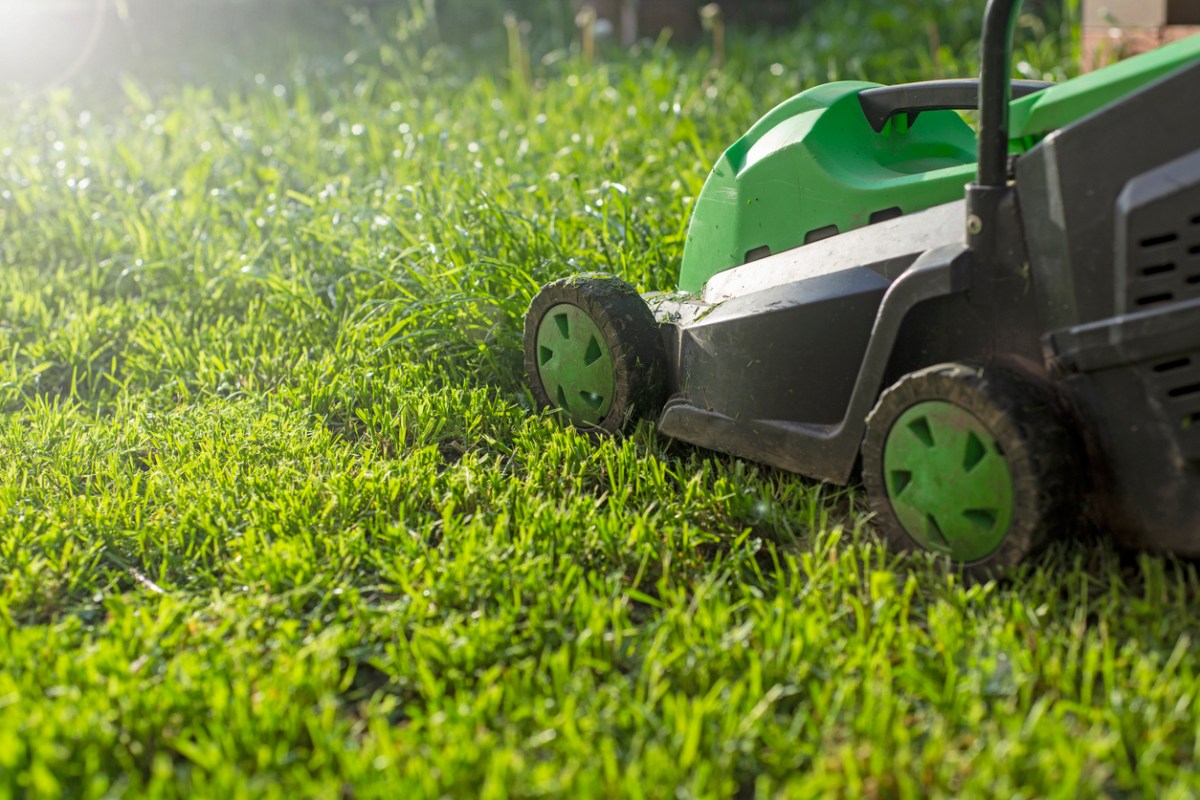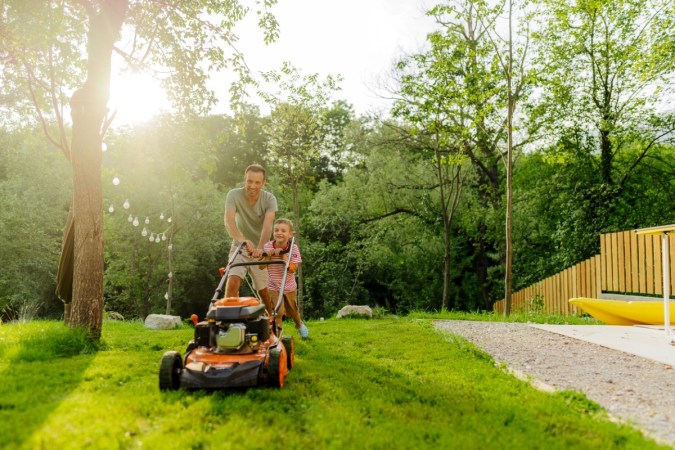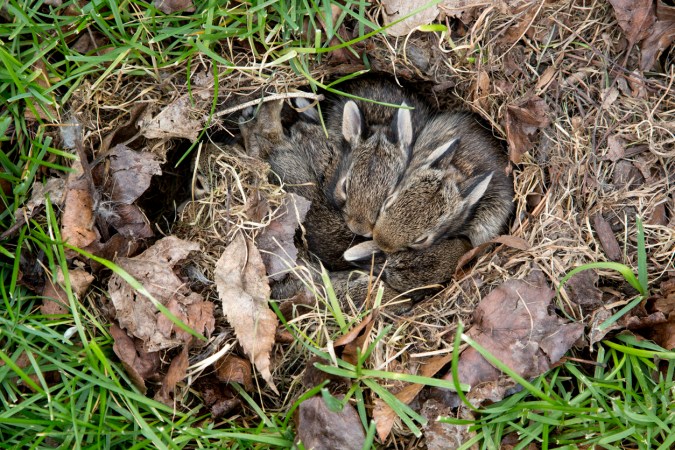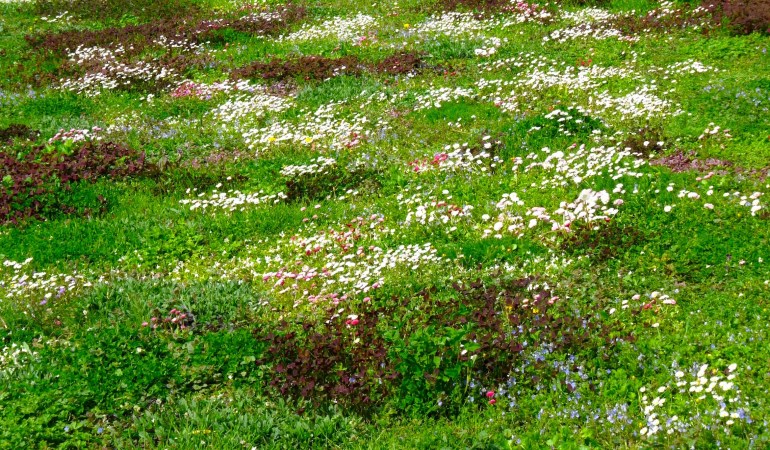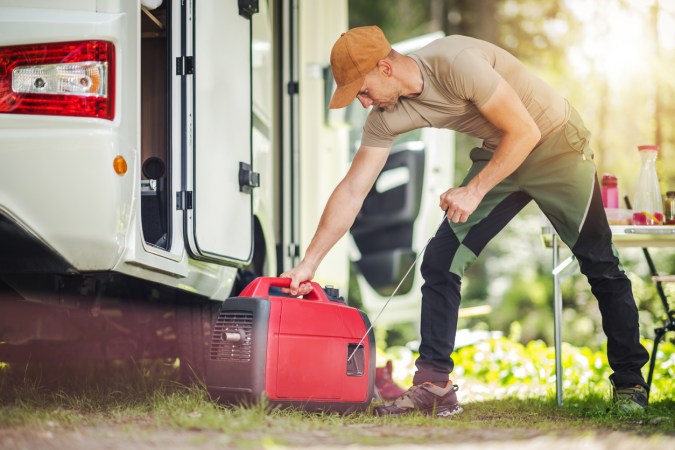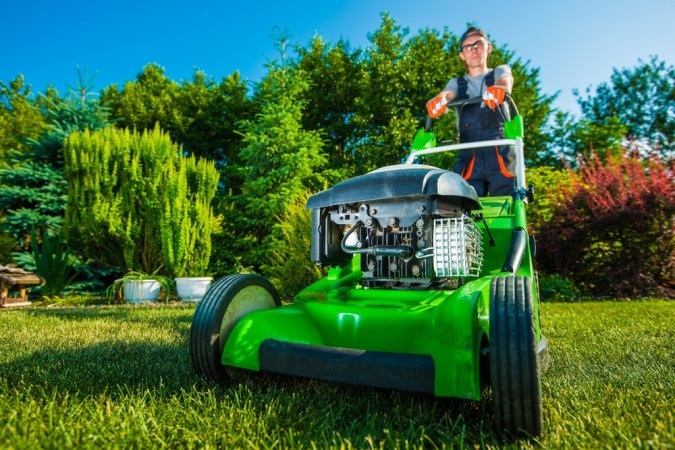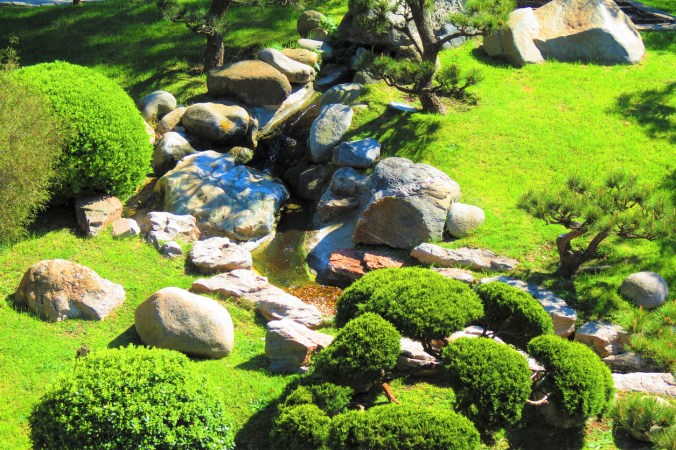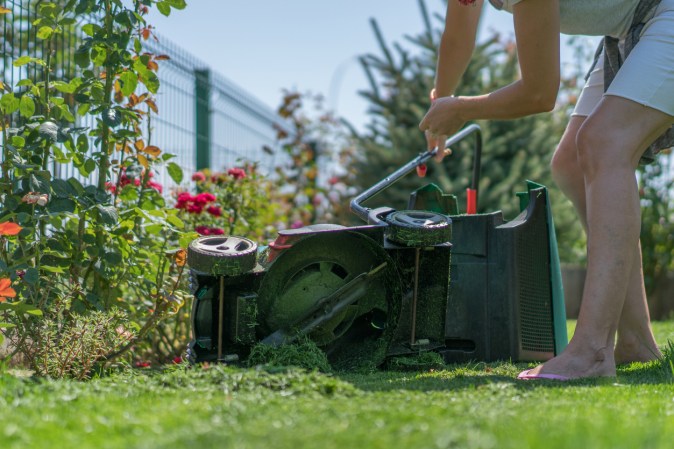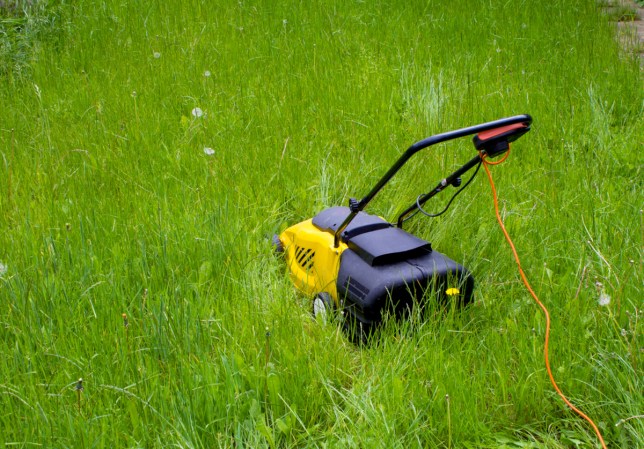We may earn revenue from the products available on this page and participate in affiliate programs. Learn More ›
Maintaining a lush, green lawn takes hard work, patience, and a green thumb. Beyond watering, fertilizing, and battling weeds, lawns also require the crucial—and time-consuming—task of regular mowing. While mowing a lawn may seem straightforward, hidden obstacles can pose threats to both you and your trusty lawn mower. From pesky weeds to forgotten toys, we’ll guide you on how to avoid each obstacle and keep your mowing experience frustration-free.
1. Children’s Toys
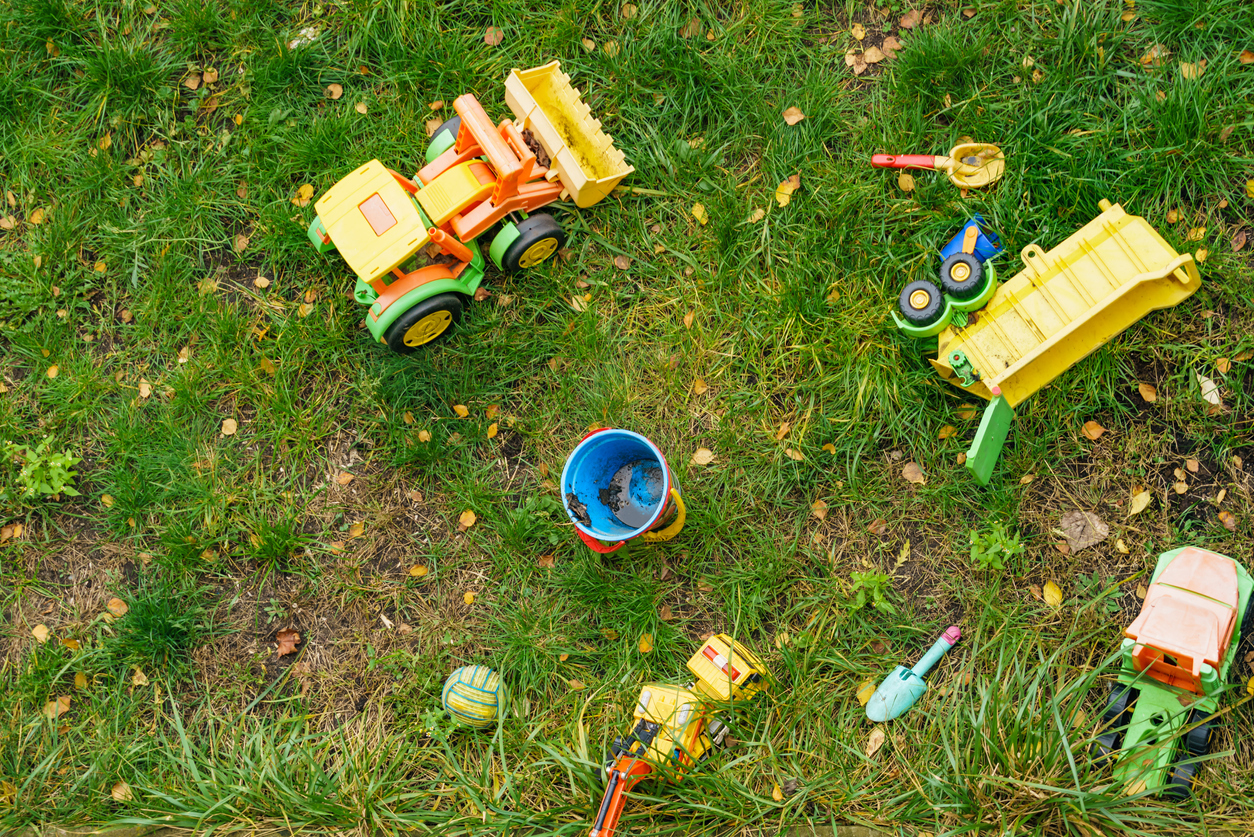
Kids’ toys have a magical way of appearing in the most unexpected places. As endearing as this might be, running over your little one’s cherished truck or doll can lead to tears for them and damage to your trusty lawn mower. So, make a quick sweep of the lawn before starting, ensuring no precious toys are left behind.
RELATED: 11 Ways You’re Accidentally Ruining Your Lawn
2. Garden Tools
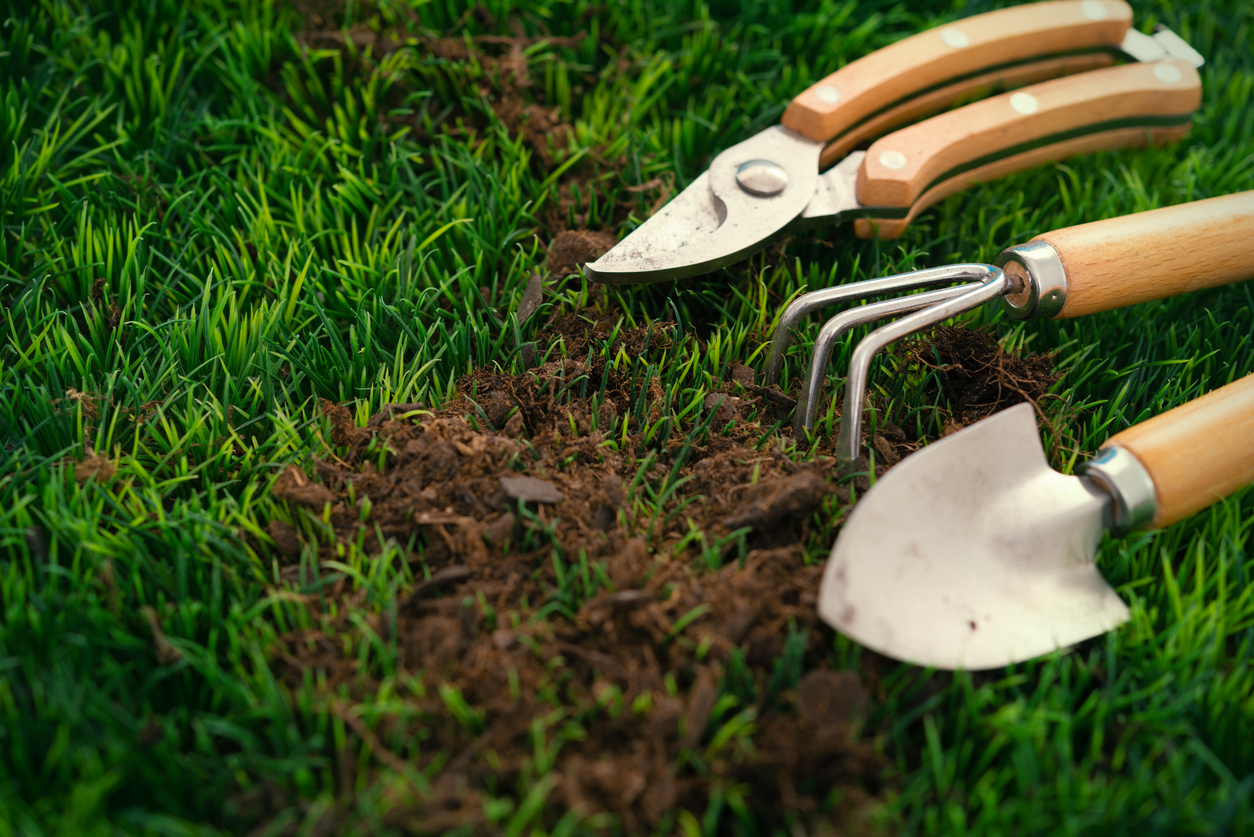
“Where did I leave that trowel?” you might wonder. Well, better find it before the lawn mower does! Garden tools lurking in the grass are accidents waiting to happen. The high-speed rotation of the mower’s blades can turn innocent tools into hazardous projectiles, posing risks to you, others, and your property. To ensure a safe and protected mowing experience, always thoroughly inspect the lawn and remove any stray tools before starting the mower.
RELATED: 7 Tips to Keep Your Mower in Working Order
3. Rocks and Branches
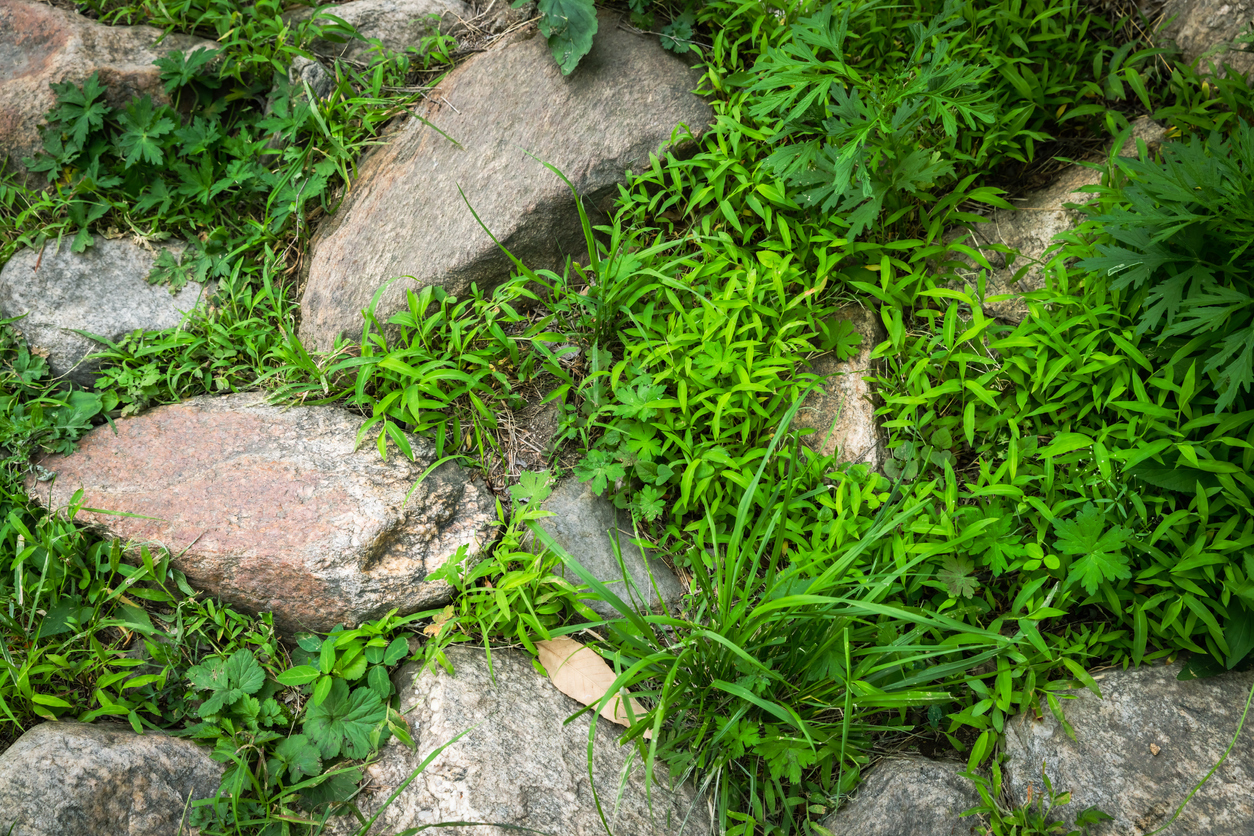
Rocks and branches are common findings on lawns, but they pose a hazard while you’re mowing. Colliding with rocks can damage lawn mower blades, leading to reduced cutting efficiency and necessitating costly repairs. Not to mention, both rocks and sticks might turn into unintentional projectiles, posing a safety risk to you and others nearby.
4. Termite Treatment Devices
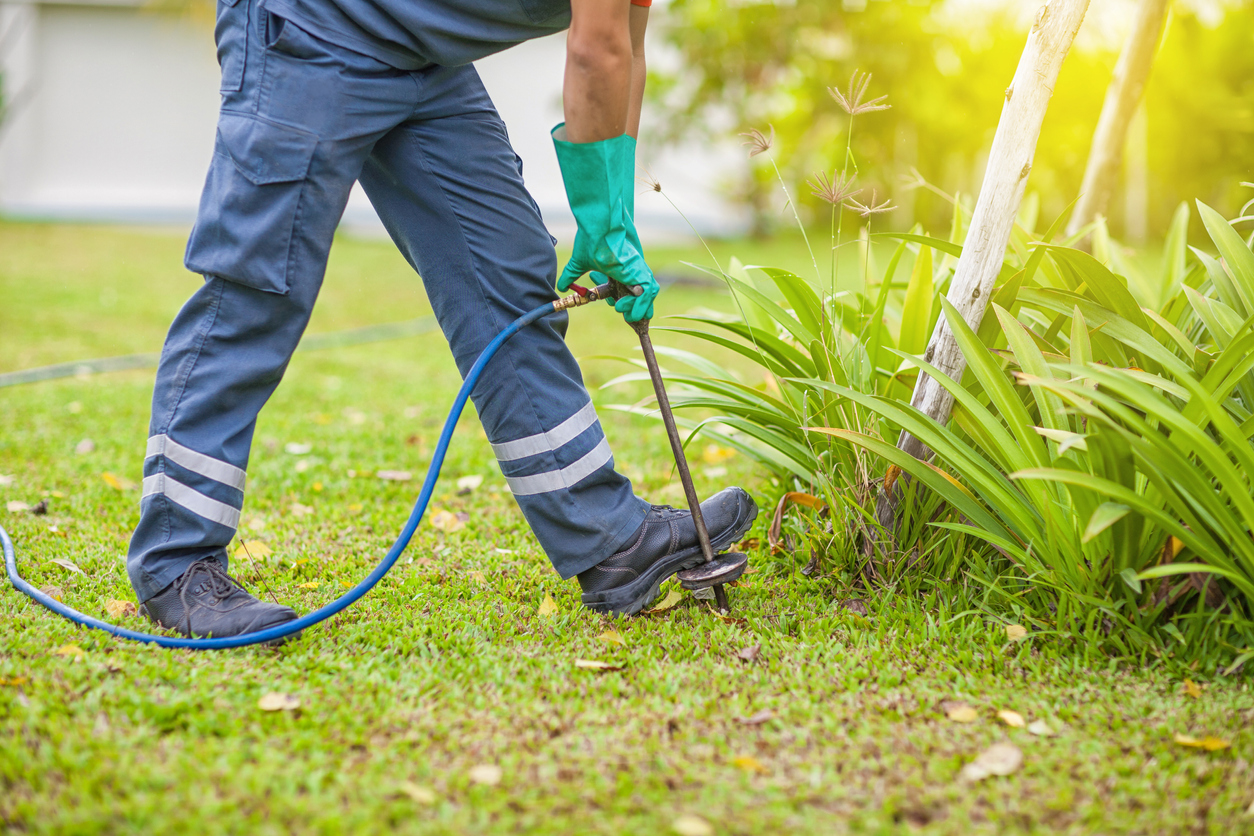
Termite treatment devices are integral to protecting buildings from termite infestations. However, these devices are not designed to withstand the weight or impact of a lawn mower. Running over termite treatment devices can compromise their effectiveness, leaving structures vulnerable to termite damage. Be mindful of their locations and steer clear to keep your home termite-free.
RELATED: The Best Lawn Mower Blade Sharpeners
5. Vent Pipes
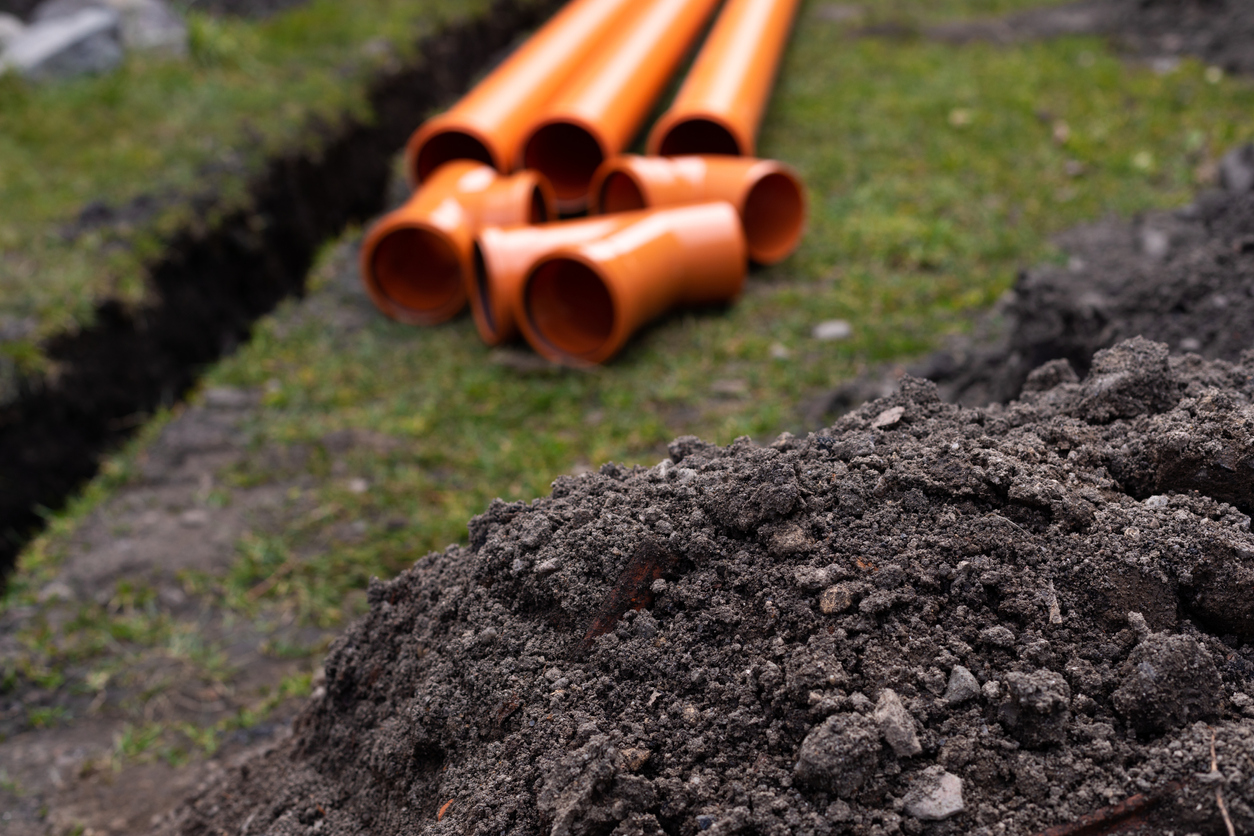
Vent pipes, while not the most glamorous part of your home, serve an essential role in both plumbing and septic systems. They work behind the scenes, quietly releasing gases and helping to maintain proper drainage. But just because they’re out of sight doesn’t mean they should be out of mind, especially when you’re mowing the lawn.
Mowing over vent pipes can lead to serious damage, requiring expensive repairs and potentially disrupting plumbing systems. Be aware of the vent pipes’ location and exercise caution during mowing to safeguard both the lawn mower and your plumbing’s infrastructure.
6. Sprinkler Heads and Irrigation Systems
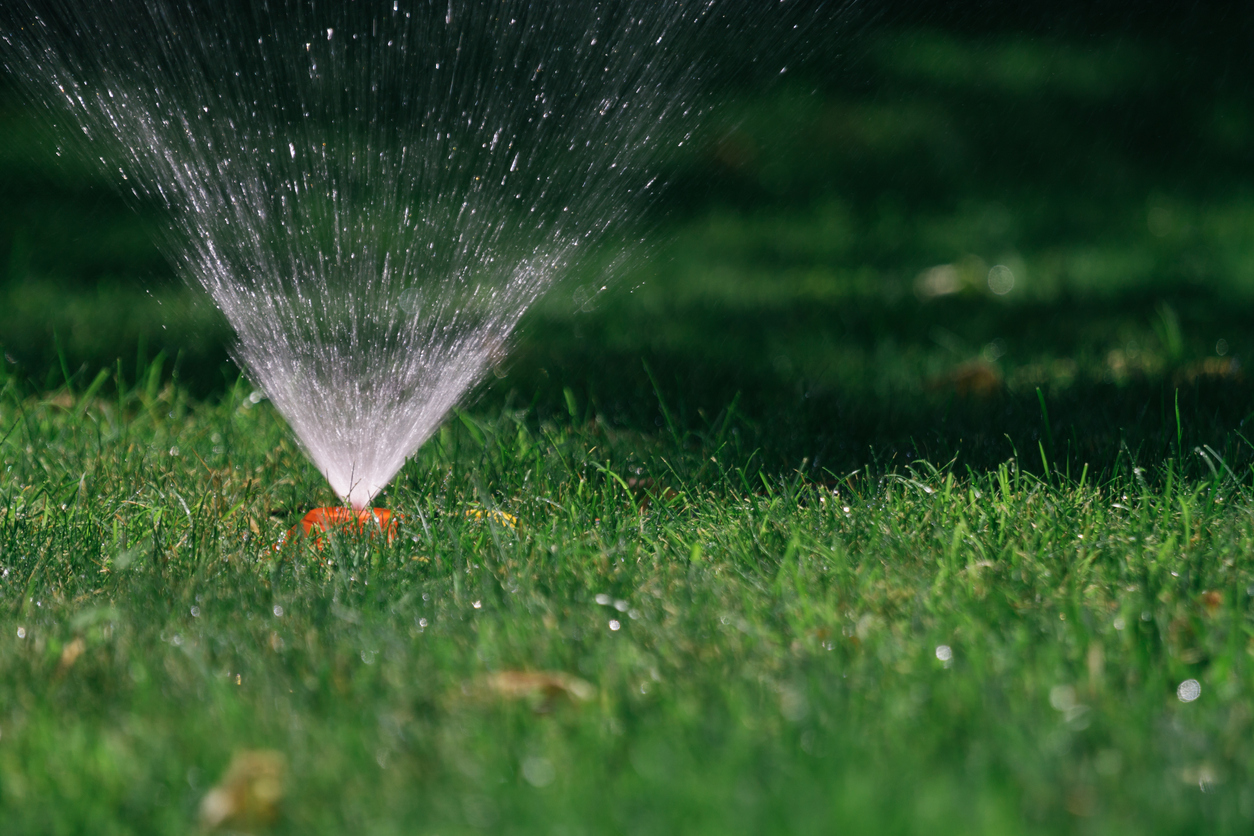
Sprinkler heads and irrigation systems are like the unsung heroes of a lush, healthy lawn and garden. They ensure that water is distributed evenly, keeping your greenery hydrated and happy. But even heroes have their weaknesses, and for sprinklers and irrigation systems, that weakness might be your lawn mower.
Running over a sprinkler head can cause it to break, so it’s essential to be mindful of the locations of these systems and adjust mowing patterns accordingly to prevent damage and preserve their functionality.
RELATED: How to Replace a Sprinkler Head on an In-Ground Sprinkler System
7. Rabbit Nests
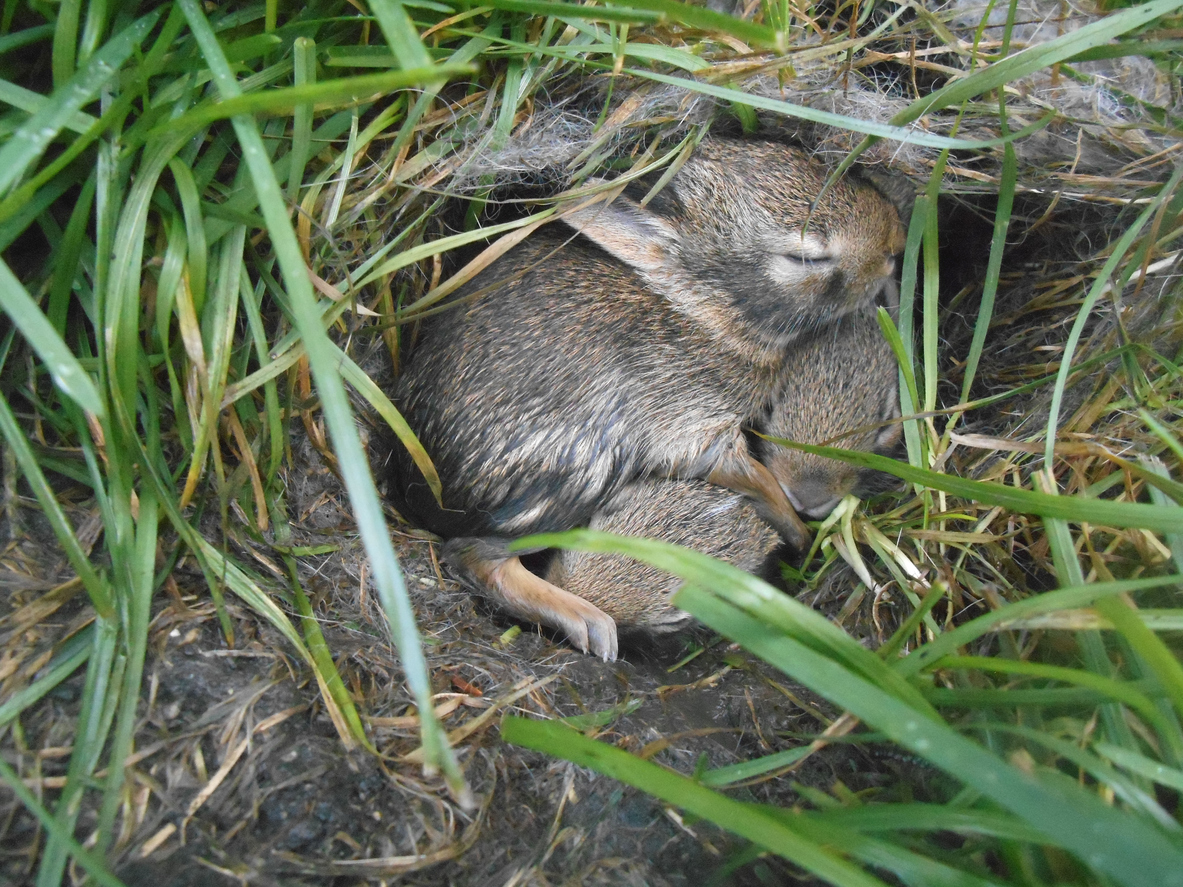
Rabbit nests serve as essential shelters for young rabbits during their vulnerable early stages of life. Disturbing these nests can cause significant stress to the mother, leading to potential abandonment of the offspring. It is crucial to inspect the lawn carefully before mowing and avoid disturbing these natural habitats to preserve the well-being of local wildlife.
RELATED: 10 Smart Solutions for Keeping Animals Out of the Garden Without Harming Them
8. Bee and Wasp Nests
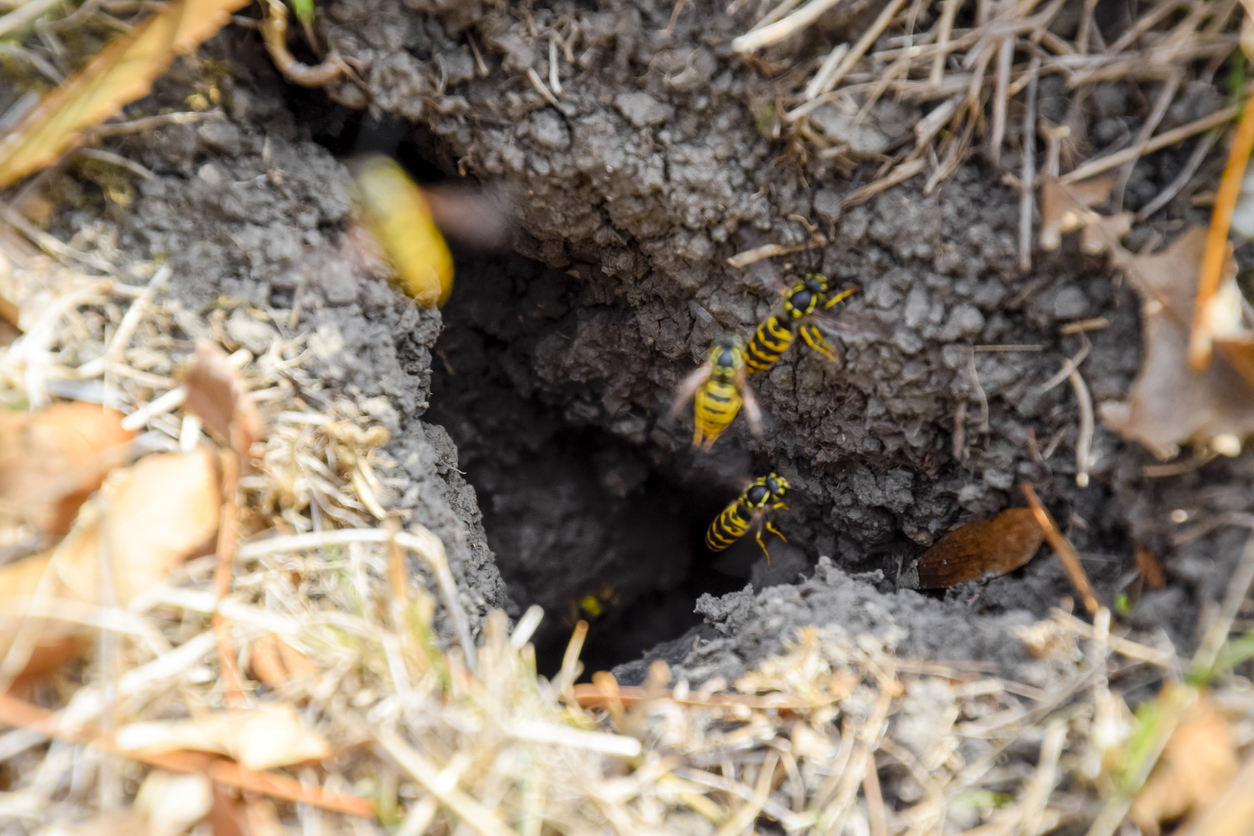
Ground-nesting bees and wasps create inconspicuous burrows in the soil. While most species are not aggressive, it’s essential to watch for signs of their presence when mowing the lawn. Identifying small openings or piles of soil can indicate ground nests. Avoid mowing these areas to prevent disturbing the bees or wasps and triggering defensive behavior.
RELATED: How to Get Rid of Wasps: Say “Goodbye!” in 5 Easy Steps
9. Hidden Holes and Dips
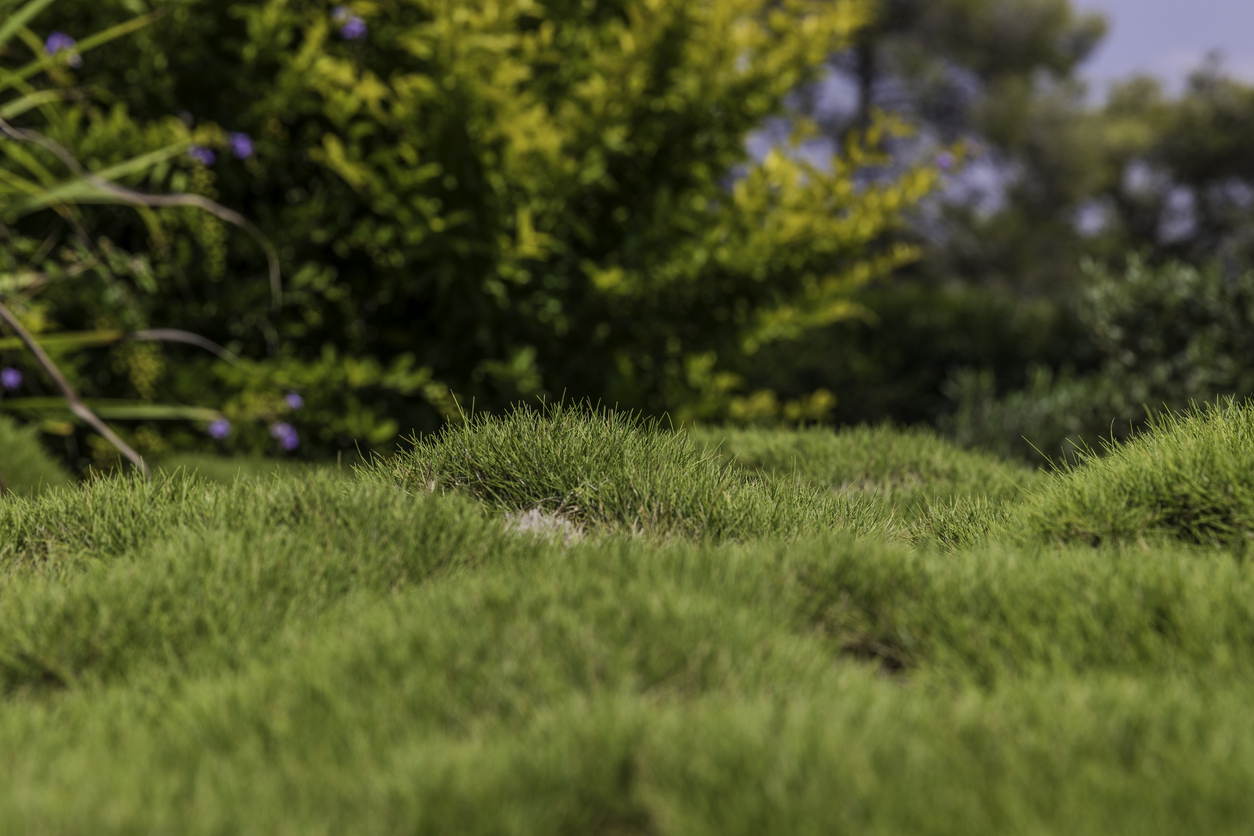
Hidden holes and dips in the lawn are common issues that many homeowners face. They aren’t just obstacles for your lawn mower—causing it to lose balance or become stuck—they also can be a safety risk. Tripping over a hole is a hazard you want to avoid when using a power tool like a lawn mower. It’s a good idea to inspect the yard before you start mowing to prevent potential accidents. Look for any signs of uneven ground and mark these areas.
10. Pet Waste

Before you rev up that lawn mower, take a moment to scan the lawn for any pet waste your furry friends might have left behind. Mowing over pet waste isn’t just an unpleasant experience— it can also spread harmful bacteria and pathogens across the lawn. So, be a responsible pet parent and dispose of any pet waste properly before you mow.
RELATED: Lawn Mower Repair and Maintenance: The Dos and Don’ts All Homeowners Should Know
11. Invasive Weeds
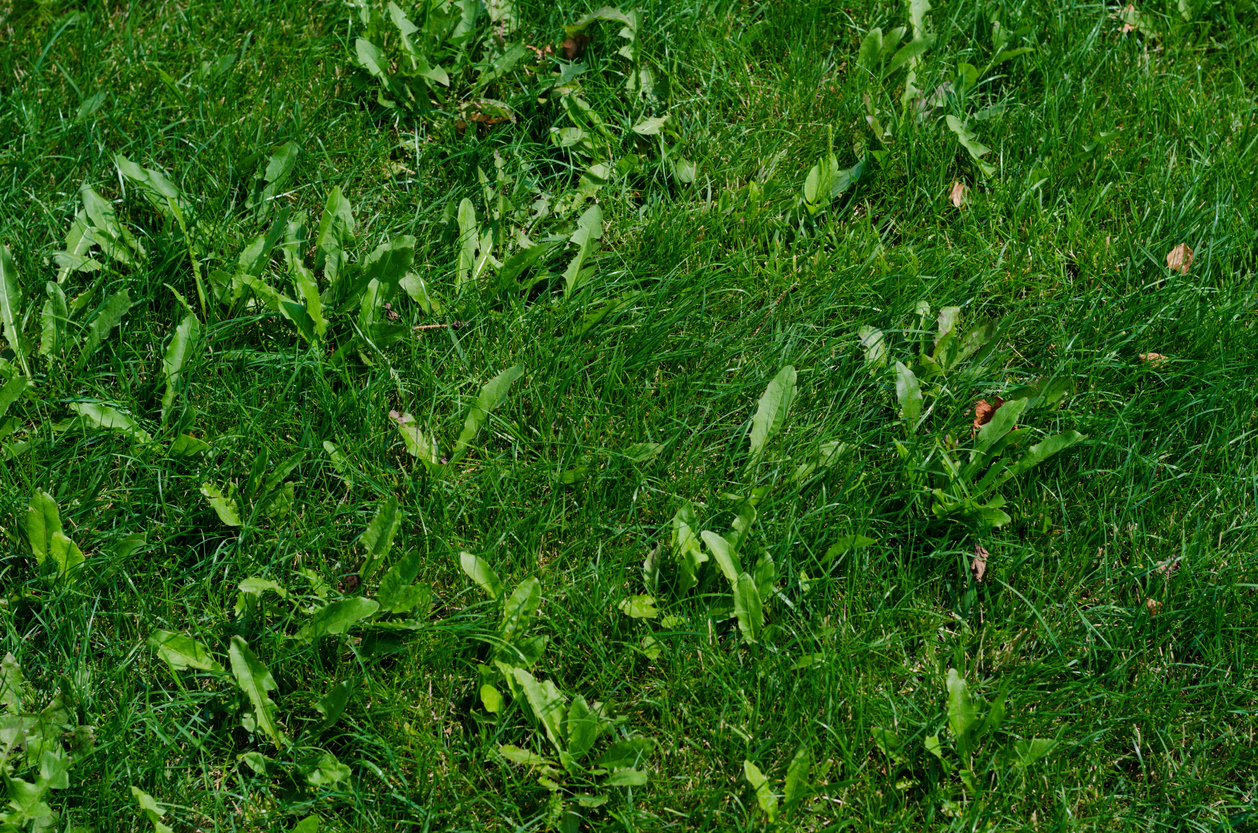
Every homeowner’s lawn has enemies, and invasive weeds are near the top of the list. Weeds like thistles and burrs aren’t just ugly. They’re tough, too, and can damage a lawn mower’s blades. This damage can reduce the mower’s efficiency and even lead to costly repairs. Mowing these weeds also spreads their seeds, which can cause a wider infestation in your lawn. To protect your lawn and mower, spot and treat these weeds early. Use specific weed treatments or pull them out by hand.

